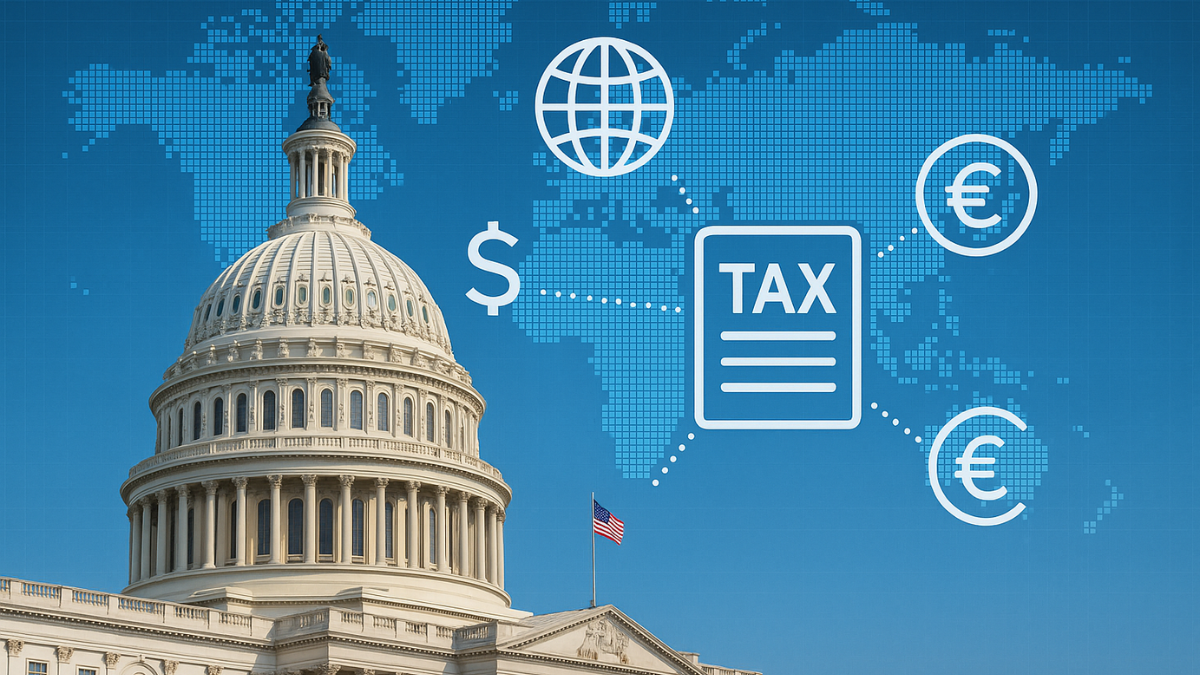Facing New Tariffs? Here’s What Cross Border Businesses Need to Know

Canadian businesses are navigating a fast-changing trade environment. These updates bring new compliance requirements, cost pressures, and strategic considerations—especially for companies relying on cross-border supply chains.
If your business exports to the U.S., here’s what you need to know to stay competitive.
How are the new U.S. tariffs affecting Canadian cross-border businesses?
Although Canada was largely spared blanket tariffs, new measures still affect trade patterns and pricing. The changes signal a more aggressive enforcement era, even if your business hasn’t been directly targeted. Many Canadian exporters accustomed to minimal trade barriers are now under increased scrutiny.
Why do product classification and country of origin matter more now?
One of the most significant shifts is the critical importance of product classification and country of origin. What used to be less important—like product classification and country of origin—is now critical. Goods that may have previously qualified for duty-free treatment under trade agreements are now under tighter examination by customs authorities. For many companies, this means going back to basics—verifying that their products are correctly classified under Harmonized System (HS) codes and that the declared country of origin aligns with trade agreement standards.
How does CUSMA protect against rising tariffs?
The United States–Mexico–Canada Agreement (CUSMA) continues to offer a framework for tariff-free trade across North America, but only for goods that meet strict qualification criteria. Many businesses have historically bypassed claiming exemptions under CUSMA because the cost-benefit wasn’t clear. With tariff rates increasing and enforcement tightening, confirming CUSMA eligibility is no longer optional—it’s essential.
Businesses must ensure they can document their goods' origin, understand their products' composition, and be prepared to justify those claims during potential audits. For example, goods bundled with services may need to be unbundled in documentation to avoid inflating the dutiable value.
What is tariff engineering and how can it help reduce costs?
Tariff engineering has quickly become a valuable strategy for companies looking to reduce costs. This involves modifying a product or supply chain process to qualify for a more favorable classification legally. Even seemingly minor product changes—such as material swaps or design adjustments—can alter a product’s classification and lower its applicable tariff.
Beyond engineering, businesses are reevaluating sourcing decisions and considering alternate suppliers or production hubs to allow products to retain a more favorable country-of-origin designation. Understanding how each component contributes to the final product’s classification is now critical to strategic planning.
What documentation is needed to comply with new tariff rules?
With customs authorities conducting more audits, documentation standards have risen sharply. Every claim—whether for a reduced tariff rate or a CUSMA exemption—must be supported by clear and complete documentation. This includes certificates of origin, classification rulings, valuation support, and transaction-level data.
What was once handled internally may now require outside help. For companies that haven’t revisited their import practices recently, it is time to bring in customs specialists and trade advisors to perform a full risk review.
Should my business consider a U.S. presence or foreign trade zone?
This may be the tipping point for structural change for companies heavily engaged in U.S. trade. Many are exploring whether it makes sense to establish a U.S. subsidiary or physical presence, both to streamline operations and better control costs. These changes may also open up access to local tax incentives and economic development programs, which can offset tariff-related costs.
In addition, more businesses are considering using U.S. foreign trade zones—designated areas treated as outside U.S. territory for customs purposes. In these zones, duties aren’t due until goods leave the area for domestic distribution. This flexibility can reduce tariff exposure and improve cash flow planning.
What long-term strategies should businesses adopt for cross-border resilience?
These new trade realities are unlikely to be short-lived. Businesses should use this moment to assess their vulnerability, re-evaluate their pricing and sourcing models, and implement forward-looking strategies.
This begins with understanding your product classifications, ensuring your goods meet CUSMA origin requirements, and verifying all supporting documentation is audit-ready. If your business hasn’t recently revisited its cross-border compliance and tariff planning, now is the time.
Our international tax team can help you navigate this complex environment—whether you need to confirm eligibility for trade agreement benefits, model out the impact of potential tariffs, or restructure your operations for greater resilience. With the right strategy and support, cross border businesses can stay competitive despite the disruption.
 Services
Services


